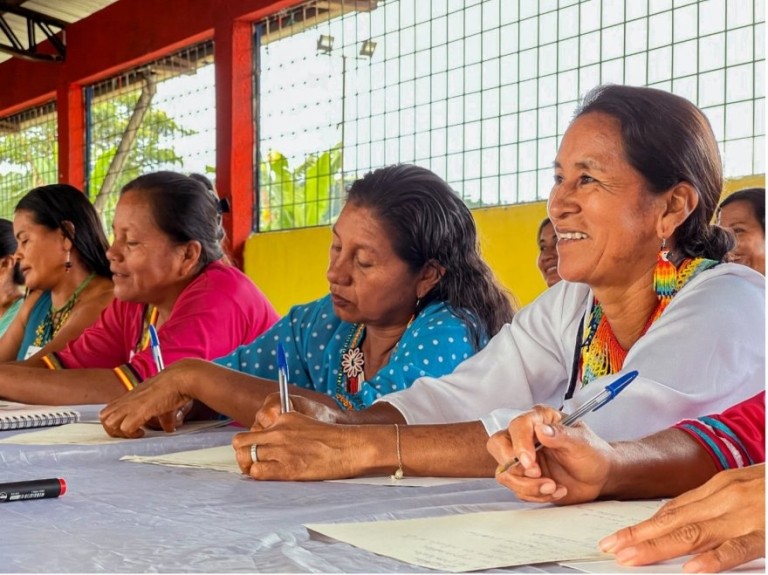Blog
COP27 and brokering equity for Indigenous peoples and local communities

COP27—occurring right now in Sharm El Sheik, Egypt—provides an opportunity to hold governments, donors and world leaders accountable to their pledge of $1.7 billion by the end of 2025 to protect Indigenous peoples and local communities’ (IPLC) land rights and ensure a just transition to a low-carbon economy. IPLCs have been effectively protecting their ancestral lands for generations, and this protection ensures forest ecosystem services continue to accrue to the global community in the form of carbon sequestration and hence climate change mitigation.
There is quantified evidence that involving indigenous peoples in biodiversity conservation and supporting their presence in territories improves conservation efforts. While we know that IPLCs are the best custodians of forest ecosystems, vested interests are eroding their land tenure and jeopardizing their livelihoods, way of life and often their lives.
To ensure communities are not left behind or negatively impacted during the necessary transition to a net-zero future, IPLCs must not only be engaged in the design of nature-based solutions, but they must also be central to their implementation. IPLCs have the capacity but often lack the resources needed to strengthen their community-based organizations to ensure they have the financial and administrative wherewithal to wield climate finance in the most effective way. They also need international support in advocating for and defending their rights through alliance-building.
That’s why Pact works to localize aid through our engaged communities approach. Pact’s expertise in relationship building and capacity development ensures that the experiences, ideas and priorities of local communities inform solutions to global challenges. This approach has enabled Pact to support more equitable and sustainable development worldwide.
For example, Pact, with support from USAID, and in alliance with 18 indigenous organizations, implements the Strengthening the Capacity of Indigenous Organizations Activity. This program advances more inclusive social-environmental governance of the Amazon basin. Pact’s role is one of attendant companion, supporting local organizations to develop their capacity to effectively receive and manage funding to lead their self-determined development and priorities.
In Madagascar, USAID Hay Tao has been supporting the process of transferring management of natural resources and protected areas to local communities. These contracts with local village forest protection associations (VOI in Malagasy) lay out the demarcation of the protected area, permitting process for forest usage, and enforcement mechanisms, and complement the VOI’s own dina, customary rules for forest usage. We not only facilitated new contracts but also supported the development and implementation of a more result- and impact-based approach to assess the environmental and social impacts of these contracts leading to improvements in the community natural resources governance model.
At COP26, billions of dollars were pledged to restore degraded land, tackle wildfires, support indigenous communities and phase out deforestation from commodity portfolios. As the public and private sectors look to make good on these pledges, there will be greater pressure on territories owned or managed by IPLCs to enter into agreements and contracts related to nature-based solutions.
Additionally, the voluntary market for carbon offsets (to aid businesses to fulfill net zero commitments) is projected to reach $180 billion by 2030. There is growing concern that the commodification of carbon is resulting in a "race to the bottom" in terms of quality and price of carbon credits that would ultimately have a negative impact on IPLCs.
As such, Pact is well placed to be an honest broker, that attendant companion, for IPLCs. We must ensure that there is equity in negotiations with the burgeoning carbon project developers and equitable distribution of future benefits, both monetary and otherwise, across all members of local communities. Further, we must ensure that carbon projects consider the co-benefits to IPLCs by striving for high-quality carbon credits.